When you buy through our links, we may earn a commission. Products or services may be offered by an affiliated entity. Learn more.
Arthritis affects roughly one-third of U.S. adults. While there are multiple types of arthritis, most people experience inflammation, joint pain, stiffness, and limited mobility. Sleeping on the right mattress can be critical for those with joint pain since an unsupportive bed can aggravate arthritis symptoms and cause additional discomfort.
- Our Test Lab findings and thousands of five-star reviews point to the same conclusion: the WinkBed is the best mattress for arthritis.
- No two people with arthritis have exactly the same pain patterns, and no single mattress works best for everyone with arthritis. Read our in-depth guide to learn more.
- Ready to cut to the chase? Watch our 1-minute video reviews to learn more about our top mattresses for arthritis.
Our Top Picks
-
Best Mattress Overall – WinkBed
View Details
-
Best Luxury Mattress – Saatva Rx
View Details
-
Best Mattress for Back Pain – Nolah Evolution 15
View Details
-
Best Mattress for Hip Pain – DLX Premier Hybrid
View Details
-
Best Organic Mattress – Birch Mattress
View Details
Swipe for more
Best Mattress Overall
WinkBed
9.4 /10
Test Lab Score
30% off all WinkBeds mattresses
30% off all WinkBeds mattresses
People with arthritis need a mattress that’s sturdy and able to cushion their joints, which is why the WinkBed takes the top spot. Strong edge support lets you take advantage of the whole mattress to stretch out and get comfortable, and you can pick from four firmness levels to optimize support.
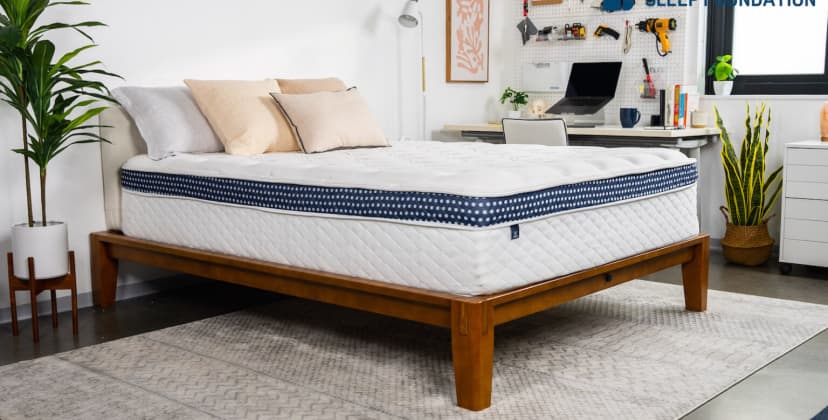
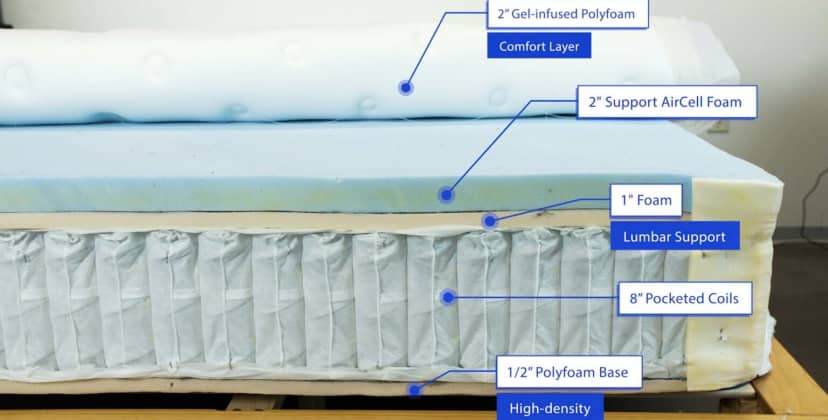


Credit: Sleep Foundation Test Lab
Price
$2,570
Mattress Type
Innerspring
Firmness Options
Medium Soft (4), Medium Firm (6), Firm (7), Firm (8)
Trial Period
120 nights (30 night requirement)
At a Glance
- Who It’s Best For: Side, back, and stomach sleepers across different weight groups – provided they choose the best firmness for their position and body type.
- Feel: Available in plush medium soft (4), balanced medium firm (6), supportive firm (7), and responsive “Plus” (8) designs.
- What It’s Made Of: Plus models feature comfort layers of zoned latex, while the other three contain adaptive polyfoam layers. All are built with zoned pocketed coils in their support core.
- What We Don’t Like: May not hug the body closely enough for people with sharp pain.
Scoring & Reviews
The following ratings show how suitable this mattress is for different sleeping positions and sleeper weights. These scores are determined by how well the mattress supports and relieves pressure for each sleeper type.
We performed a meta-analysis on 8573 validated customer reviews of the Winkbed. This is what people who bought the mattress had to say:- Pain Relief and Support: A significant number of users report alleviation of back, hip, and shoulder pain, attributing this to the mattress’s supportive design. Individuals with chronic back issues have noted substantial improvements in sleep quality.
- Comfort Across Sleep Positions: Reviewers from various sleep positions—side, back, and stomach—find the mattress comfortable. The availability of different firmness levels allows users to select options that best suit their sleeping style.
- Temperature Regulation: Many customers appreciate the mattress’s ability to stay cool, enhancing overall comfort throughout the night.
- Edge Support: Users frequently mention the robust edge support, which provides a stable and usable sleeping surface across the entire mattress.
- Firmness Options: Customers appreciate the variety of firmness options available, finding the right balance for their personal preferences.
- Durability and Craftsmanship: The mattress is often praised for its high-quality construction and materials, with users expressing confidence in its longevity. The lifetime warranty further reinforces trust in the product’s durability.
- Customer Service and Trial Experience: Customers value the 120-night risk-free trial and responsive customer service, noting that these factors contribute to a positive purchasing experience.
Full Details
Many people with arthritis and joint pain also experience discomfort in the lower back and hips. A mattress that cushions the spine and provides strong overall support is essential to waking up without aches and pains. The WinkBed is designed to keep your body on an even plane while providing a comfortable, well-cushioned surface.
How It Performed
The WinkBed caters to sleepers across all weight ranges and sleep positions, thanks to its four firmness options. We found that side sleepers prefer the cushioned surface of the medium soft (4) and medium firm (6) models while back sleepers gravitate toward the firm (7) and firm (8). Stomach sleepers up to 230 pounds received the most support from the luxury firm and firm, while those over 230 pounds fared well on the firm (8). In general, those who weigh over 230 pounds will probably receive inadequate support from the softer options and may prefer the firm (7) or firm (8).
Construction Breakdown
All firmness options of the WinkBed feature a Euro-top quilted with adaptive polyfoam encased in a breathable Tencel fabric cover. Beneath is a layer of proprietary SupportCell polyfoam with a higher-density composition than conventional polyfoam. The medium soft option includes an additional layer of polyfoam to enhance cushioning.
The support core is composed of a pocketed coil system zoned to offer enhanced support in the lumbar region and less support to lighter parts of the body. The coil system is reinforced with thicker coils around the perimeter to bolster edge support.
Trial, Shipping, and Warranty
WinkBeds provides free ground shipping for all customers in the contiguous U.S. Your order includes a sleep trial that allows you to test out the WinkBed for up to 120 nights, along with a lifetime warranty that covers structural defects for as long as you own the mattress.
Best Mattress for Side Sleepers
Helix Midnight Luxe
9.7 /10
Test Lab Score
25% off sitewide with code WKFLSH25
25% off sitewide with code WKFLSH25
The Helix Midnight Luxe provides the balanced feel that side sleepers need to wake up without aches and pains. Memory foam softens impact near the hips, shoulders, and neck, but the Midnight Luxe retains an even surface to keep the spine in a healthy position.
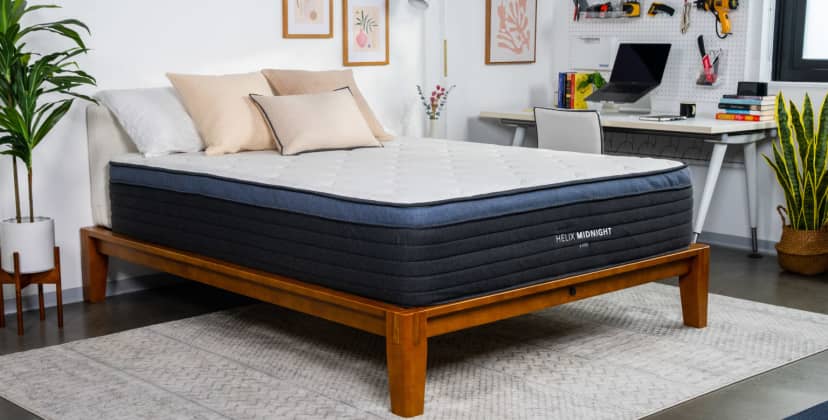
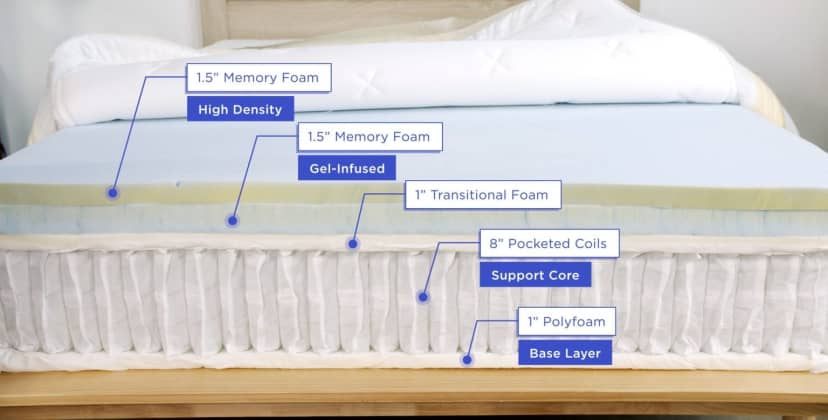


Credit: Sleep Foundation Test Lab
Price
$1,799
Mattress Type
Hybrid
Firmness Options
Medium Firm (6)
Trial Period
120 nights (30-night requirement)
At a Glance
- Who It’s Best For: Side and back sleepers weighing up to 230 pounds.
- Feel: Medium firm (6) design with plush cushioning on the surface and responsive, targeted support around the midsection.
- What It’s Made Of: Two memory foam comfort layers, followed by transitional polyfoam and zoned pocketed coils with reinforced perimeter support.
- What We Don’t Like: Not soft enough for most back and stomach sleepers over 230 pounds.
Scoring & Reviews
The following ratings show how suitable this mattress is for different sleeping positions and sleeper weights. These scores are determined by how well the mattress supports and relieves pressure for each sleeper type.
We performed a meta-analysis on 5876 validated customer reviews of the Helix Midnight Luxe. This is what people who bought the mattress had to say:- Comfort and Support: Many reviewers express that the mattress provides exceptional comfort and support, especially noting its ability to alleviate back, hip, and shoulder pain.
- Sleep Quality Improvement: The mattress is frequently described as transformative for those who previously struggled with sleep disturbances.
- Temperature Regulation: Positive remarks are made about the cooling properties of the mattress. Users find the cooling aspect effective, helping to maintain a comfortable sleeping temperature throughout the night.
- Customer Service: Experiences with customer service are predominantly positive, with buyers appreciating the responsive and helpful nature of the support team. Issues are resolved satisfactorily, contributing to a positive overall customer experience.
- Durability Concerns: A few reviewers express concerns about the mattress showing signs of wear or sagging prematurely. These concerns are not widespread but are significant enough to be noted by potential buyers.
- Mixed Reviews on Firmness: While many find the mattress perfectly balanced, there are mixed reviews regarding its firmness. Some users find it softer than expected given its firmness level. While the ‘medium firm’ rating is appropriate by our measurements, the bed does have a ‘cushy’ foam feel that makes for a fairly soft surface feel.
Full Details
Helix offers a wide selection of hybrid mattresses to suit different types of sleepers. The Midnight is one of the most comfortable and balanced mattresses in this collection thanks to a medium firm (6) feel.
How It Performed
Side sleepers between 130 and 230 pounds on our team enjoyed the Midnight’s plush foam layers, which closely contoured to their shoulders and hips to reduce pressure. Back and stomach sleepers weighing less than 130 pounds should feel supported by the coil system, but those in higher weight categories may prefer a firmer mattress.
The Midnight has a plush surface that doesn’t interfere with its overall firmer feel. Extra coil support along the perimeter also reduces sinkage when weight is applied, so most people weighing up to 230 pounds will feel secure lying near the edges or getting in and out of bed. Air circulates freely through the coil system and the entire mattress is encased in a breathable Tencel cover, so people who run hot in bed should remain fairly cool throughout the night.
Construction Breakdown
The Midnight Luxe begins with an adaptive memory foam layer that cushions the body without sinking or squeezing too tightly. Underneath is transitional polyfoam that ensures your weight is evenly distributed while preventing your body from sinking too deeply into the coils. The multi-zone pocketed coil support core creates added stability for the lower back and hips – two areas where people with arthritis tend to feel sharp pains. Thicker coils are zoned along the perimeter of the mattress to help its edges bear your weight. A breathable Tencel cover encases the mattress. For an additional fee, you can upgrade to a cover made of cool-to-the-touch GlacioTex fabric.
Trial, Shipping, Warranty
Despite the premium construction, the Midnight Luxe has a price-point that is lower than average for a hybrid model. Helix provides free ground shipping to the contiguous U.S. The company’s sleep trial spans 120 nights in length, and the mattress is backed by a lifetime manufacturer’s warranty.
Best Value Mattress
Brooklyn Bedding CopperFlex Memory Foam
8.6 /10
Test Lab Score
25% off sitewide with code: WINTER25
25% off sitewide with code: WINTER25
The budget-friendly Brooklyn Bedding CopperFlex Memory Foam delivers quality construction and excellent pain relief at a reasonable price. Plush foam layers ensure a close contour and deep cradling for your most sensitive areas, but the underlying transitional and base foams push back against your weight to prevent uncomfortable sinkage.

Credit: Sleep Foundation Test Lab
Price
$466
Mattress Type
Foam
Firmness Options
Medium Firm (6)
Trial Period
120 nights (30-night requirement)
At a Glance
- Who It’s Best For: Side sleepers weighing at least 130 pounds and back sleepers up to 230 pounds.
- Feel: Medium firm (6) with zoned transitional foam to push back against the extra weight in your torso and hips.
- What It’s Made Of: Adaptive polyfoam and memory foam comfort layers, zoned transitional foam, and two base layers of high-density polyfoam. Cover is made of cooling GlacioTex fabric.
- What We Don’t Like: Strong off-gassing odor for up to 72 hours after unboxing.
Scoring Breakdown
The following ratings show how suitable this mattress is for different sleeping positions and sleeper weights. These scores are determined by how well the mattress supports and relieves pressure for each sleeper type.
We performed a meta-analysis on 549 validated customer reviews of the Brooklyn Bedding CopperFlex Memory Foam. This is what people who bought the mattress had to say:- Pricing and Value: Many reviewers have highlighted that the mattress is affordable and offers great value for the price, making it an excellent choice for budget-conscious shoppers.
- Heat Regulation: Several users noted that the mattress does not retain much heat, which contributes to a cooler and more comfortable sleep, especially for those who tend to sleep hot.
- Edge Support: The mattress is reported to have good edge support, which is beneficial for those who use the edge of the bed frequently or sleep close to the sides.
- Odor and Off-Gassing: Some reviews mention that the mattress has minimal off-gassing odor upon unpacking, which is a common concern with new mattresses. The smell will dissipate in a few days.
- Hybrid Option: The availability of hybrid models is appreciated, particularly for those needing more support, such as individuals with larger frames.
- Customer Service: Positive remarks about customer service suggest that the company handles queries and issues effectively.
Full Details
If you’re shopping for a new mattress with a limited budget, the Brooklyn Bedding CopperFlex Memory Foam is a high-quality option that won’t break the bank. This six-layer all-foam mattress offers an appealing balance of close contouring, sturdy support, and consistent cooling – all at a reasonable price that falls well below much of the competition.
How It Performs
During our hands-on tests of the CopperFlex, the highest ratings came from side sleepers weighing 130 pounds or more and back sleepers weighing 230 pounds or less. That said, most of our testers found the balanced, medium firm (6) design comfortable and sufficiently supportive – though stomach sleepers weighing at least 130 pounds noted some sinkage.
Motion isolation is one of the CopperFlex’s defining strengths. All six foam layers work together to absorb movement and prevent motion from transferring across the mattress, making the mattress a good option for couples and co-sleepers. The copper fiber infusion and cooling cover also help reduce heat buildup. While there is still some heat retention, this mattress offers better temperature control than most competing all-foam models we’ve tested.
Construction Breakdown
The CopperFlex’s topmost layer consists of adaptive polyfoam quilted to the cover, and this is followed by two memory foam layers. Copper fibers infused into the first memory foam layer are intended to minimize heat absorption. The transitional foam is zoned with extra firmness and density beneath your midsection, allowing your body to remain on an even plane. Two high-density foam layers make up the support core, and the cover is made of proprietary GlacioTex fabric engineered to dissipate body heat when it comes into contact with your skin.
Trial, Shipping, and Warranty
Brooklyn Bedding offers free ground shipping for customers in the contiguous U.S. Each CopperFlex Memory Foam order includes a 120-night sleep trial, during which you may return the mattress for a refund after testing it out for at least 30 nights. If you decide to keep the CopperFlex, it’s also covered under a lifetime manufacturer’s warranty.
Best Luxury Mattress
Saatva Rx
8.5 /10
Test Lab Score
$300 off orders of $1,000 or more
$300 off orders of $1,000 or more
With the Saatva Rx, there’s luxury at every turn. An innovative design provides deep cushioning to soothe the joints of arthritis sufferers. An extra perk is free in-home installation with every purchase.

Credit: Sleep Foundation Test Lab
Price
$2,801
Mattress Type
Hybrid
Firmness Options
Medium Soft (4)
Trial Period
365 Nights ($99 Return Fee)
At a Glance
- Who It’s Best For: Side and back sleepers under 130 pounds who live with back pain.
- Feel: A medium soft (4) feel with deep contouring and light responsiveness.
- What It’s Made Of: Thick polyfoam and lumbar padding in the comfort system, followed by pocketed coils with foam tips to suppress motion transfer.
- What We Don’t Like: High sticker price and $99 return fee.
Scoring & Reviews
The following ratings show how suitable this mattress is for different sleeping positions and sleeper weights. These scores are determined by how well the mattress supports and relieves pressure for each sleeper type.
We performed a meta-analysis on 40 validated customer reviews of the Saatva Rx. This is what people who bought the mattress had to say:- Comfort and Support: A significant number of reviewers mentioned the comfort and support provided by the Saatva Rx mattress, particularly for those with chronic pain or orthopedic issues. Users reported significant improvements in sleep quality and reductions in pain.
- Product Quality: Feedback on the quality of the Saatva Rx mattress was overwhelmingly positive. Reviewers felt that the mattress was well-made and worth the investment, often citing the materials and construction as superior to other brands.
- Temperature Regulation: Some reviewers appreciated the temperature regulation features of the mattress, noting that it stayed cooler than other mattresses they had used, which contributed to a better sleep experience.
- Issues with Firmness and Support: While most feedback was positive, a few reviewers noted issues with the firmness and support of the mattress, particularly concerning edge support and suitability for lighter individuals. These were minor compared to the overall positive feedback but were important for some buyers’ comfort.
- Return and Exchange Policy: Saatva’s return and exchange policy was frequently mentioned as a positive aspect, with customers feeling reassured by the ability to return or exchange the mattress if it did not meet their needs. This policy enhanced customer confidence in making a purchase.
Full Details
The Rx is one of the newest entries to Saatva’s mattress lineup, and the only model specifically designed to reduce chronic pain. Ultra-plush foam layers over a coil-on-coil support system create a medium soft (4) feel, making the Rx much more adaptive than the average hybrid model. Foam-tipped pocketed coils also cut down on motion transfer, making the mattress a solid option for couples.
How It Performed
As a softer-than-average hybrid, the Rx performed differently than many of the other coil mattresses our team has tested. Side sleepers across all weight groups gave the Rx favorable ratings due to its close contouring and ample cushioning for the shoulders and hips. Back and stomach sleepers under 130 pounds also found the mattress comfortable, whereas heavier testers who use these positions noticed sinkage beneath their midsections — to an excessive degree, in some cases.
We were impressed with the Rx’s performance when testing the mattress for pressure relief and motion isolation, two areas where hybrids often struggle. Strong ratings in both categories can be attributed to the deep comfort system. At the same time, some of us felt “stuck” when moving across the surface and noticed deep compression when lying or sitting along the edges.
Construction Breakdown
The Rx’s comfort system begins with a strip of dense memory foam located beneath the lower back, which is intended to alleviate pain and pressure in your lumbar region. A cooling gel infusion helps the foam resist heat buildup. Microcoils encased in dense polyfoam provide additional cushioning while creating a buffer between your body and the support core.
Pocketed coils stabilize the mattress and reinforce the sleep surface, but each coil is topped with a foam tip to minimize motion transfer when you and your partner change sleep positions or get up during the night. A breathable organic cotton cover treated with Guardin antimicrobial agent encases the mattress. At 15 inches thick, the Rx is a high-profile model and requires a deep-pocket fitted sheet.
Trial, Shipping, and Warranty
Although the Rx is on the expensive side, Saatva sweetens the deal with free White Glove delivery anywhere in the contiguous U.S. This service includes full setup in your room of choice and removal of your old mattress and box spring upon request. Additional perks include a generous sleep trial spanning 365 nights and a lifetime warranty for those who decide to keep the mattress after the trial ends.
Best Mattress for Pressure Relief
Leesa Sapira Chill Hybrid
9.0 /10
Test Lab Score
25% off sitewide with code: WEEKEND25
25% off sitewide with code: WEEKEND25
The Leesa Sapira Chill Hybrid checks a lot of boxes for comfortable sleep with thick, breathable foam layers and zoned coils. You can choose from three firmness levels based on your body type and sleep position.
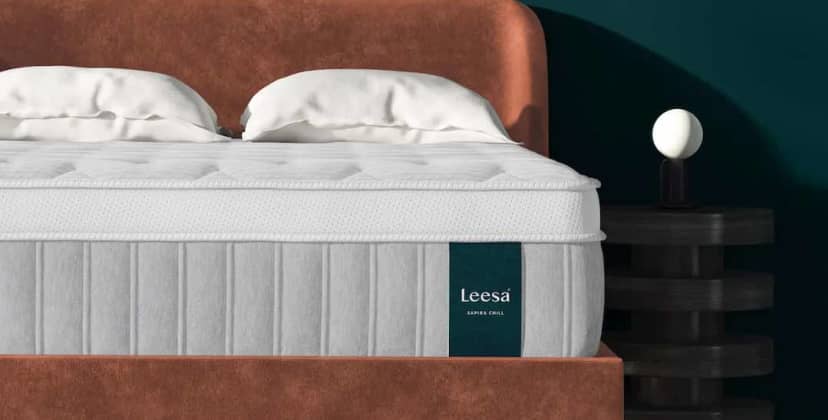
Price
$1,698
Mattress Type
Hybrid
Firmness Options
Medium (5), Medium Firm (6), Firm (7)
Trial Period
120 nights (30-night requirement)
At a Glance
- Who It’s Best For: Side, back, and stomach sleepers across all weight groups who sleep hot and want a mattress that reduces pressure buildup.
- Feel: You can choose from medium (5), medium firm (6), and firm (7) designs.
- What It’s Made Of: Comfort layers of gel-infused polyfoam, memory foam, and transitional foam over three-zone pocketed coils with perimeter reinforcement and high-density base foam.
- What We Don’t Like: The thick profile requires a deep-pocket fitted sheet and off-gassing smells can be overpowering for the first few nights.
Scoring Breakdown
The following ratings show how suitable this mattress is for different sleeping positions and sleeper weights. These scores are determined by how well the mattress supports and relieves pressure for each sleeper type.
We performed a meta-analysis on 25 validated customer reviews of the Leesa Sapira Chill Hybrid. This is what people who bought the mattress had to say:- Suitability for Different Sleepers: Several reviews highlight that the mattress is suitable for side sleepers, stomach sleepers, and even for those who experience hip and shoulder pain.
- Temperature Regulation: Some reviews mention the mattress being cool and comfortable, while others complain about it sleeping hot, despite being the “Chill” version.
- Quality and Durability Concerns: A few reviewers express concerns about the mattress’s durability or mention receiving a damaged product.
- Overall Satisfaction: While many reviews are overwhelmingly positive, scoring 5 out of 5, there are a few lower scores where users mention issues like the mattress being too soft, too bouncy, or not meeting expectations in terms of firmness and comfort.
- Specific Needs: Some reviews from users with back pain or who have had long-term use of other mattresses indicate that this model significantly improved their sleep quality and comfort.
Full Details
Most mattresses that are suitable for people with arthritis also excel at alleviating painful pressure points in the shoulders, lower back, and hips. The Leesa Sapira Chill Hybrid scored particularly well during our pressure relief tests – we’ve attributed its strong performance in this category to a thick comfort system composed of four individual layers and pocketed coils that are zoned to support heavier areas of your body. You can also choose from three firmness levels based on how much you weigh and which sleep position you prefer.
How It Performs
Our testing team evaluated all three firmness options for the Sapira Chill Hybrid. The medium (5) design offers the closest contour, and should be a great match for side and back sleepers under 130 pounds who don’t sink too deeply. If you weigh 130 to 230 pounds, chances are you’ll prefer the medium firm (6) model – this was far and away the most popular choice among testers in the mid-level weight group. Back and stomach sleepers over 230 pounds awarded the highest ratings to the firm (7) model.
All three sleep fairly cool despite the thick foam cushioning. Cooling gel infused in the top layer, a breathable cover, and steady airflow throughout the coil system all contribute to the bed’s excellent thermoregulation. We also noticed that the foam layers isolate motion exceptionally well, which can benefit couples and co-sleepers.
Construction Breakdown
The Sapira Chill Hybrid’s comfort system begins with 2 inches of adaptive, gel-infused polyfoam sewn to the Euro-top cover. Secondary comfort layers of memory foam and polyfoam add more cushioning to the surface, while transitional foam pushes back against your body and prevents you from sinking into the support core.
The pocketed coils are zoned with stronger springs located beneath your torso and hips. This helps keep you on an even plane without making the entire surface feel too stiff. Perimeter reinforcement also bolsters edge support, so you shouldn’t notice too much compression when getting in and out of bed. A final layer of high-density base foam rounds out the hybrid design.
Trial, Shipping, and Warranty
The Sapira Hybrid ships free of charge to all 50 states and select locations in Canada. Leesa’s sleep trial runs for 120 nights – if you decide to return the mattress, you’ll receive a full refund within this window period. Those who keep their Sapira Chill Hybrid are also covered under a lifetime manufacturer’s warranty.
Best Mattress for Back Pain
Nolah Evolution 15
9.2 /10
Test Lab Score
35% off sitewide + extra $100 off with code: SF100
35% off sitewide + extra $100 off with code: SF100
The Nolah Evolution 15 takes on back pain with a hybrid design that caters to sleepers who want a choice of firmness options. Its mix of responsive materials softly cradle pressure points so that your spine can stay aligned without unwanted bending or twisting.

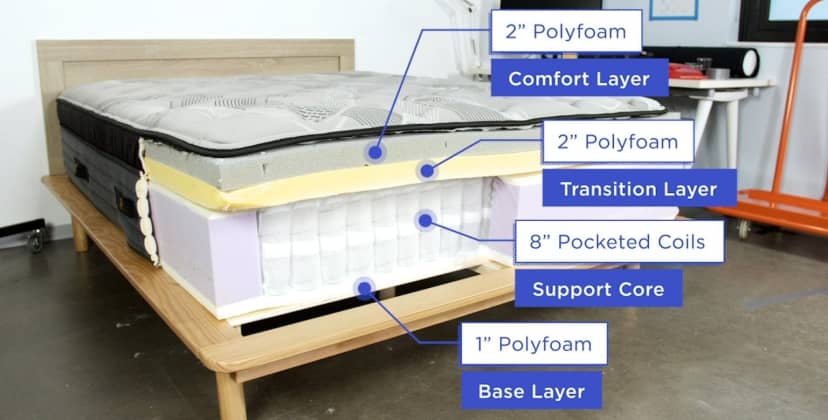
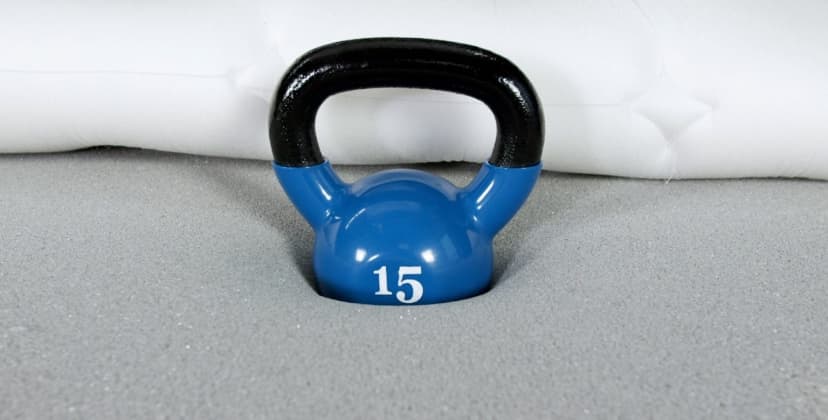
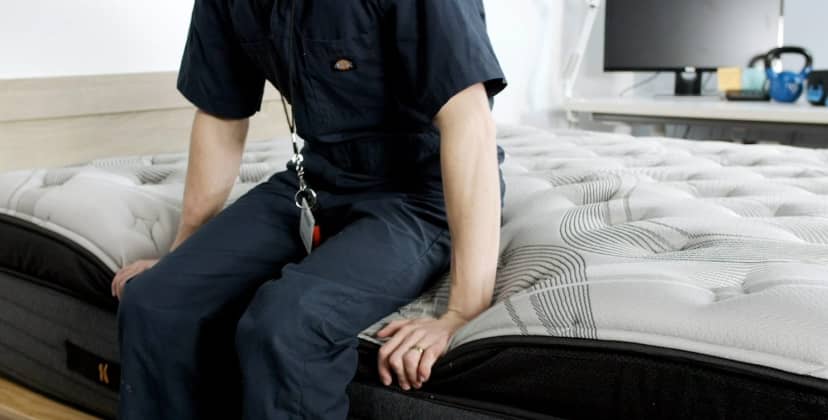
Credit: Sleep Foundation Test Lab
Price
$1,624
Mattress Type
Hybrid
Firmness Options
Medium (5), Medium Firm (6), Firm (8)
Trial Period
120 nights (30-night requirement), $99 return pickup fee
At a Glance
- Who It’s Best For: Most side and back sleepers regardless of body type, as well as stomach sleepers up to 230 pounds.
- Feel: Available in medium (5), medium firm (6), and firm (8) designs – all feel plush on the surface with targeted midsection support.
- What It’s Made Of: Four comfort layers of adaptive polyfoam and a zoned pocketed coil support core with a reinforced perimeter.
- What We Don’t Like: High profile requires a deep-pocket fitted sheet and returns incur a $99 fee.
Scoring & Reviews
The following ratings show how suitable this mattress is for different sleeping positions and sleeper weights. These scores are determined by how well the mattress supports and relieves pressure for each sleeper type.
We performed a meta-analysis on 897 validated customer reviews of the Nolah Evolution 15. This is what people who bought the mattress had to say:- Motion Isolation: Couples note the excellent motion isolation, which minimizes disruptions from partner movements during the night.
- Edge Support: The edge support of the mattress is frequently highlighted, with many finding it adequate for sitting or sleeping near the edge without feeling like they will roll off.
- Softness: Many reviewers discuss the softness of the mattress. Some find it too soft, causing discomfort, especially for heavier individuals, while others appreciate the plushness.
- Pressure Relief and Support: Reviewers frequently highlight relief from back and shoulder pain, attributing this to the supportive foam layers and zoned coil system.
- Heat Retention: A few reviewers note that the mattress retains heat, making it uncomfortable for some, particularly in warmer climates or for those who sleep hot.
- Durability and Quality: Users often comment on the high quality and durability of the mattress, noting that it maintains its shape and comfort over time.
Full Details
The Nolah Evolution is a Euro-top hybrid available in three firmness levels: medium (5), medium firm (6), and firm (8). This selection, which ranges from deep contouring to sturdy support, should accommodate most people with arthritis regardless of their weight or which sleep position they primarily use.
How It Performed
Each firmness level offers distinct benefits for sleepers. The medium feel conformed very closely during tests, cushioning the body and improving spinal alignment. This option best suited side-sleeping testers who weigh up to 230 pounds and back sleepers under 130 pounds. Firm models are quite supportive and barely contour at all, so back and stomach sleepers over 230 pounds will probably prefer these models. If you fall in the middle of these weight ranges, you should consider the medium firm Evolution 15, the most balanced of the three.
Breathable foams, a cooling cover, and excellent air circulation allowed the mattress to excel at temperature control during tests. The foams used in the comfort system are more responsive than memory foam, and the coils generate a fair amount of bounce, so the surface was also fairly easy to move across for our testers. This was especially true of firm models.
Construction Breakdown
The Evolution 15’s Euro-top is cushioned with a layer of open-cell polyfoam. A border gusset around this layer is intended to capture and dissipate body heat near the surface. Three additional foam layers make up the comfort system, including a comfort layer of proprietary AirFoamICE designed to promote additional cooling. The support core contains pocketed coils divided into three zones, resulting in more reinforcement for the midsection and softer cradling for the head, shoulders, and legs. The dense base layer is composed of plant-based material, and the entire mattress is encased in a cooling ArcticTex fabric cover.
Trial, Shipping, and Warranty
Six standard sizes are available, as well as a split king size for adjustable beds. Nolah offers free ground shipping throughout the contiguous U.S. All Evolution 15 purchases are backed by a 120-night sleep trial, but customers may opt out of the trial period and reduce their up-front costs. The mattress is also protected with a lifetime warranty against structural defects.
Best Mattress for Hip Pain
DLX Premier Hybrid
8.6 /10
Test Lab Score
Extra $100 off with code: SLEEP
Extra $100 off with code: SLEEP
The DLX Premier Hybrid delivers essential cushioning for the hips and keeps the whole body in a supported position that won’t exacerbate other pain points. Its bouncy feel prevents you from feeling stuck in bed, and different firmness levels give you options when selecting a mattress.

Credit: Sleep Foundation Test Lab
Price
$1,700
Mattress Type
Hybrid
Firmness Options
Medium Soft (4), Medium Firm (6), Firm (8)
Trial Period
120 nights (30-night requirement)
At a Glance
- Who It’s Best For: Most side and back sleepers living with back and hip pain.
- Feel: Your choice of plush medium soft (4), balanced medium firm (6), or ultra-supportive firm (8) designs.
- What It’s Made Of: Adaptive polyfoam comfort layers over pocketed coils with a reinforced perimeter.
- What We Don’t Like: Initial off-gassing odor can be strong and unpleasant for the first few nights.
Scoring & Reviews
The following ratings show how suitable this mattress is for different sleeping positions and sleeper weights. These scores are determined by how well the mattress supports and relieves pressure for each sleeper type.
We performed a meta-analysis on 112 validated customer reviews of the DLX Premier Hybrid. This is what people who bought the mattress had to say:- Mattress Construction: Many users praise the Premier Hybrid’s design, particularly the ability to swap out the comfort layer if it feels too soft or too firm at first.
- Heat Regulation: While some users say the foam retains heat, most find the DLX Premier Hybrid sleeps fairly cool.
- Edge Support: The Premier Hybrid’s edge support depends on which firmness you choose, but many users say all designs feel fairly stable along their perimeters and don’t sag too much when they get in and out of bed.
- Odor and Off-Gassing: Some reviews mention initial odor, but there are not any complaints of persistent or long-term smells associated with this mattress.
- Customer Service: Users have a lot of nice things to say about DLX’s customer service, especially the company’s quick responsiveness to questions and new layer requests.
Full Details
The DLX Premier Hybrid earns points for a thoughtful design three firmness options to accommodate different sleeper types. A quintessential hybrid design bolstered with sturdy coils helps ensure a good balance of cushioning and support. Our testing team also appreciated the feel of the Premier Hybrid’s foam layers, which contour closely but shouldn’t hug too tightly — a common complaint about memory foam.
How It Performed
Our team tested all three of the Premier Hybrid’s firmness levels. Side sleepers up to 230 pounds and back sleepers under 130 pounds awarded the medium soft (4) design its highest ratings. You should opt for this model if you enjoy deep cushioning from your sleep surface. Conversely, those who need maximum support — such as back and stomach sleepers over 230 pounds — may want to consider the firm (8) design. The medium firm (6) model was most popular, making it a solid “Goldilocks” option if you enjoy moderate contouring and solid reinforcement without too much pushback.
The softest mattress performed well during our pressure relief and motion isolation tests, while we awarded favorable ratings to the two firmer models in categories like edge support and ease of movement. All three earned high marks for temperature control, but the optional pillow-top encased in phase change material provides an extra cooling boost for exceptionally hot sleepers.
Construction Breakdown
The DLX Hybrid’s three firmness levels share the same material composition, but each has a unique firmness level. Three foam layers — each one progressively denser from top to bottom — cushion your sore spots while gently pushing back against your weight. The result is a surface that offers the contouring of memory foam without too much hug.
Pocketed coils over base foam make up the Premier Hybrid’s support core. The perimeter coils are thicker to help you get in and out of bed with ease. A polyester cover quilted with moisture-wicking viscose fibers encases the mattress. At 14 inches thick, the Premier Hybrid is considered a high-profile model.
Trial, Shipping, and Warranty
The Premier Hybrid qualifies for free ground delivery throughout the contiguous U.S. DLX Mattress offers a 120-night sleep trial for all orders. Firmness exchanges are not permitted during this time frame. If you decide to keep the mattress after the trial concludes, it’s further backed by a lifetime manufacturer’s warranty.
Best Mattress for Spinal Alignment
Bear Elite Hybrid
8.5 /10
Test Lab Score
40% sitewide with code: SF40
40% sitewide with code: SF40
For people with arthritis, what the Bear Elite Hybrid brings to the table is a powerful combination of thoughtful design, specialty materials, and well-rounded performance. It gives targeted support to key areas of the body so that the spine stays in a neutral position, and the unique material in its cover helps the mattress stay comfortably cool.
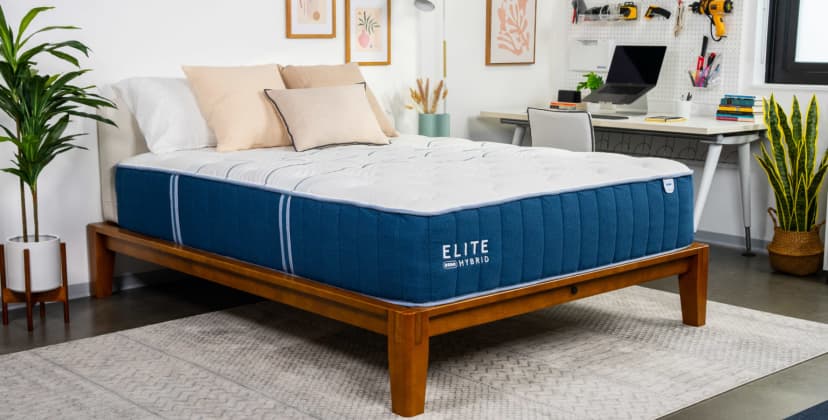
Credit: Sleep Foundation Test Lab
Price
$1,499
Mattress Type
Hybrid
Firmness Options
Medium (5), Medium Firm (6), Firm (8)
Trial Period
120 nights (30-night break-in period)
At a Glance
- Who It’s Best For: Side and back sleepers who need extra back support.
- Feel: Available in medium (5), medium firm (6), and firm (8) designs, all of which offer gentle contouring and targeted multi-zone support.
- What It’s Made Of: Memory foam comfort layer, zoned transitional foam, and seven-zone pocketed coils with a reinforced perimeter.
- What We Don’t Like: Some couples report motion transfer in response to movement.
Scoring & Reviews
The following ratings show how suitable this mattress is for different sleeping positions and sleeper weights. These scores are determined by how well the mattress supports and relieves pressure for each sleeper type.
We performed a meta-analysis on 3703 validated customer reviews of the Bear Elite Hybrid. This is what people who bought the mattress had to say:- Comfort and Support: Many reviewers highlight the mattress’s balance of comfort and support, often mentioning relief from back pain and improved sleep quality.
- Firmness Options: Customers appreciate the various firmness options, with some opting for firmer versions after experiencing discomfort with medium firmness.
- Temperature Regulation: Several reviews note the mattress’s ability to stay cool, which enhances sleep quality, especially in hot weather.
- Size and Upgrade Options: Customers are pleased with the availability of different sizes and the option to upgrade, which provides flexibility for different needs and preferences.
- Quality of Additional Products: Positive remarks on the quality of accompanying products like pillows and sheets, which are often included as free additions.
- Motion Isolation: Many reviewers highlight the mattress’s excellent motion isolation, making it ideal for shared sleeping arrangements.
Full Details
The Bear Elite Hybrid is an excellent match for sleepers who seek relief from painful pressure points at night. The foam layers and responsive coils cradle joints where pressure tends to build up while also delivering enough support to ensure healthy sleep posture.
How It Performed
The mattress is available in three firmness levels — medium (5), medium firm (6), and firm (8). This versatility makes the Bear Elite Hybrid a good fit for most types of sleepers. Side and back sleepers up to 130 pounds found the medium option most comfortable, thanks to the ample cushioning for the shoulders, neck, and spine. The medium firm model was comfortable for most back and side sleepers up to 230 pounds. The balance of cushioning and support in this model is perfect for these sleepers, who need the best of both worlds to keep the head, neck, and spine in healthy alignment. The firm model earned the highest marks from back and stomach sleepers over 130 pounds.
Hot sleepers will appreciate the cooling properties of the Celliant fabric and phase change material in the cover, as well as the ample air circulating through the coils. We found the bed also excels in responsiveness. If you prefer mattresses that are easy to move around on, the Bear Elite Hybrid is a good choice.
Construction Breakdown
The bed starts with a quilted cover followed by a memory foam layer that closely contours to the body. A transitional polyfoam layer enhances the contouring but has a firmer feel than the memory foam. This helps support the body and prevents it from sinking into the bed. The support core is composed of pocketed coils that excel in support but also have a responsive feel. The coils are zoned to boost support to the lumbar area.
Trial, Shipping, and Warranty
Bear offers a 120-night sleep trial with the Elite Hybrid. If you keep the bed, you also receive a lifetime warranty. The mattress ships free to the contiguous U.S.
Best Organic Mattress
Birch Mattress
8.8 /10
Test Lab Score
25% off sitewide with code WKFLSH25
25% off sitewide with code WKFLSH25
There’s no questioning the eco-friendly bonafides of the Birch Mattress. With natural and certified organic materials, it not only upholds principles of sustainability but also delivers a compelling blend of joint support, temperature regulation, and overall comfort.
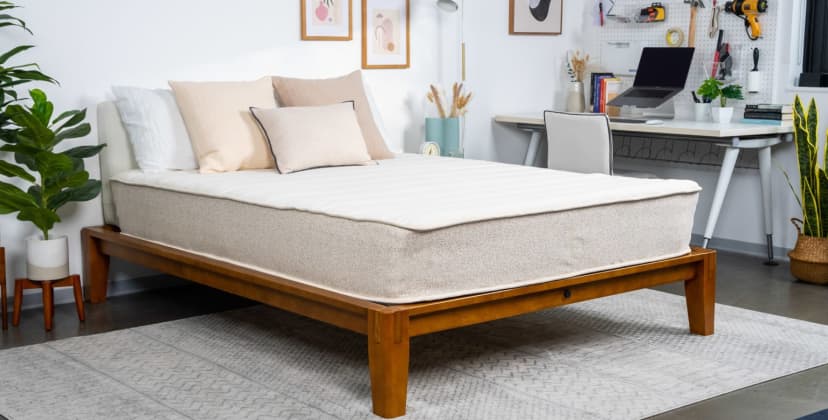

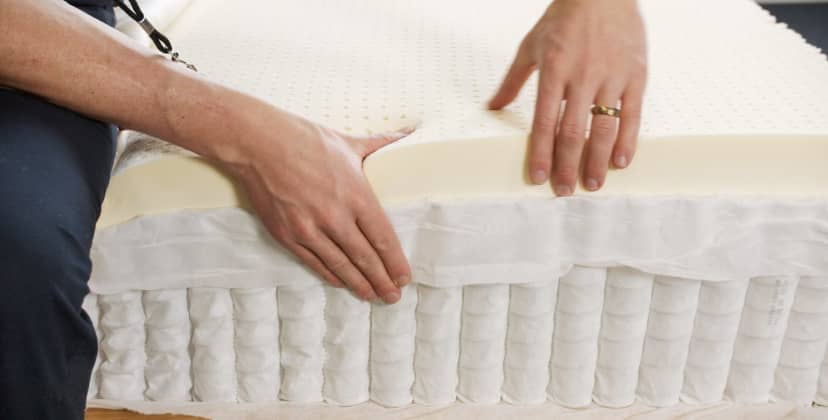
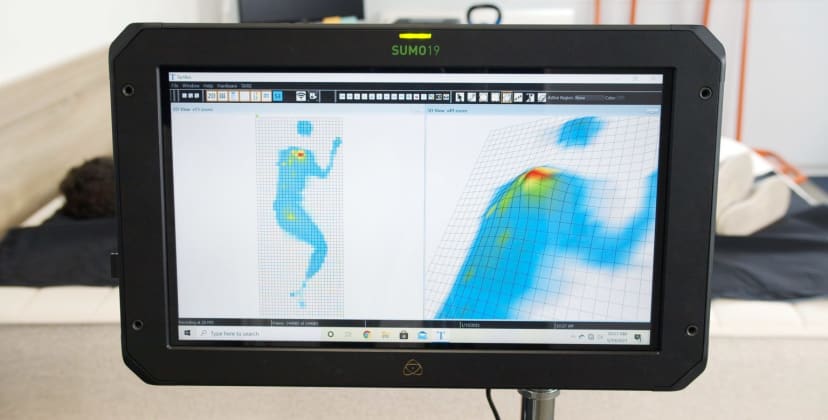
Credit: Sleep Foundation Test Lab
Price
$1,499
Mattress Type
Latex Hybrid
Firmness Options
Medium Firm (6)
Trial Period
120 nights (30-night requirement)
At a Glance
- Who It’s Best For: Side and back sleepers seeking a responsive, breathable mattress.
- Feel: A medium firm (6) design with a cool surface and plenty of bounce.
- What It’s Made oO: Organic wool. and organic cotton batting, followed by a latex comfort layer and pocketed coil support core.
- What We Don’t Like: Not enough contouring for people who want to be hugged by their mattress.
Scoring & Reviews
The following ratings show how suitable this mattress is for different sleeping positions and sleeper weights. These scores are determined by how well the mattress supports and relieves pressure for each sleeper type.
We performed a meta-analysis on 1917 validated customer reviews of the Birch Mattress. This is what people who bought the mattress had to say:- Comfort and Support: Many reviewers mention the mattress provides excellent support and comfort, particularly noting improvements in back and shoulder pain.
- Dual Firmness: The flippable design offering a choice between firm and soft sides is frequently appreciated, allowing users to customize their sleeping experience.
- Durability and Quality: Customers commend the high-quality, eco-friendly materials and construction, expressing satisfaction with the mattress’s durability and longevity. The use of organic and natural materials not only ensures comfort but also contributes to the mattress’s overall durability.
- Temperature Regulation: Customers appreciate the mattress’s ability to maintain a comfortable sleep temperature, attributing this to its natural and organic materials. The use of organic wool and natural latex contributes to effective temperature regulation, enhancing overall sleep quality. .
- Price: Opinions on the mattress’s price vary, with some finding it a good value and others considering it somewhat expensive.
- Weight and Maneuverability: The mattress is noted to be heavy, making it difficult to move or flip without assistance.
- Smell and Off-gassing: A few reviewers mention an initial off-gassing smell that dissipates over time.
- Edge Support: Mixed reviews on edge support, with some some noting it could be improved.
Full Details
For many sleepers with arthritis, a combination of body contouring and even support is key to managing nightly aches and pains. The Birch Mattress is a medium firm (6) latex hybrid that delivers a balanced feel. The mattress’ components are also quite breathable and the coils distribute air evenly throughout the interior, so it should sleep cool for most people regardless of where they live.
How It Performed
Our testers found that the mid-range firmness and moderate contouring was particularly well suited to people in the range of 130 to 230 pounds, regardless of which sleep position they prefer. The surface was just cushioned enough to cradle sensitive joints such as the hips and shoulders, but the coils delivered plenty of support to keep your body from sagging. Since the Birch Mattress is a latex hybrid, you can expect more responsiveness on the surface.
Construction Breakdown
The mattress begins with a comfort layer of Talalay latex that conforms to the body without hugging too tightly while pocketed coils stabilize the entire mattress. A base layer of wool and rayon acts as a fire barrier while providing reinforcement for the coils. Extra-strength outer coils create strong perimeter support. This ensures added stability when you sleep near the edges of your mattress or get in and out of bed.
Eco-conscious shoppers should be drawn to this model due to its environmentally friendly composition. The latex has earned certification from the Rainforest Alliance, indicating the rubber trees that produce the latex have been sustainably grown. The cotton cover is certified as organic by the Global Organic Textile Standard, while the fire barrier is made of natural wool.
Trial, Shipping, and Warranty
Birch is one of the only online mattress brands to offer free ground shipping to customers in all 50 states. Each purchase is backed by a sleep trial that runs 120 nights in length, as well as a lifetime manufacturer’s warranty covering structural defects in the mattress for as long as you own it.
Looking for more information as you explore mattress options? Our picks for the overall best mattresses of 2026 have earned solid ratings across a variety of performance categories. Also, check out our best mattresses for back pain and other guides focused on helping you sleep comfortably.
The Best Deals of the Week
-
Save $199
—
Brooklyn Bedding CopperFlex Memory Foam
$466 (List Price $665) -
Save $600
—
Helix Midnight Luxe
$1,799 (List Price $2,399) -
Save $2,436
—
Nectar Adjustable Bundle
$1,398 (List Price $3,834) -
Save $771
—
WinkBed
$1,799 (List Price $2,570) -
Save $1,020
—
DreamCloud Classic Hybrid
$699 (List Price $1,719)
Best Overall
WinkBed
9.4 /10
Test Lab Score
30% off all WinkBeds mattresses
Shop at WinkBedsArthritis relief from a supportive mattress offered in four firmness levels.
See More Details
Best for Side Sleepers
Helix Midnight Luxe
9.7 /10
Test Lab Score
25% off sitewide with code WKFLSH25
Shop at HelixGentle cushioning of the hips and shoulders helps ease pain for side sleepers with arthritis.
See More Details
Best Value
Brooklyn Bedding CopperFlex Memory Foam
8.6 /10
Test Lab Score
25% off sitewide with code: WINTER25
Shop at Brooklyn BeddingAn affordable all-foam mattress with a balanced feel to soothe pain points and pressure spots.
See More Details

Credit: Sleep Foundation Test Lab
Best Luxury
Saatva Rx
8.5 /10
Test Lab Score
$300 off orders of $1,000 or more
Shop at SaatvaA luxurious hybrid serving up cloud-like comfort for people with arthritis.
See More Details
Best Pressure Relief
Leesa Sapira Chill Hybrid
9.0 /10
Test Lab Score
25% off sitewide with code: WEEKEND25
Shop at LeesaMultiple layers work as a team to relieve pressure and alleviate inflamed joints.
See More Details
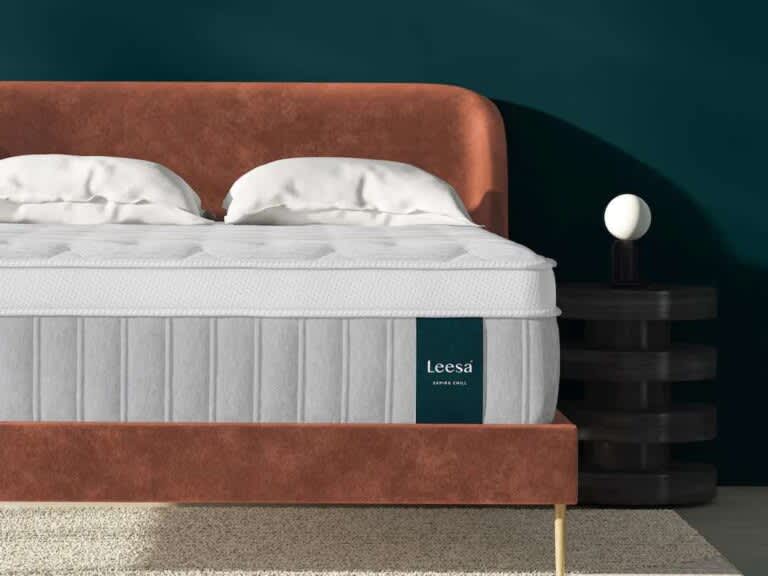
Best for Back Pain
Nolah Evolution 15
9.2 /10
Test Lab Score
35% off sitewide + extra $100 off with code: SF100
Shop at NolahA hybrid that combats arthritis and back pain with targeted cushioning and support.
See More Details
Best for Hip Pain
DLX Premier Hybrid
8.6 /10
Test Lab Score
Extra $100 off with code: SLEEP
Shop at DLX MattressA responsive hybrid mattress that provides deep cushioning around the lower back and hips.
See More Details

Credit: Sleep Foundation Test Lab
Best for Spinal Alignment
Bear Elite Hybrid
8.5 /10
Test Lab Score
40% sitewide with code: SF40
Shop at BearDependable foam hybrid design promotes spinal alignment for people with arthritis.
See More Details
Best Organic
Birch Mattress
8.8 /10
Test Lab Score
25% off sitewide with code WKFLSH25
Shop at BirchThe best option for people with arthritis who value both sustainability and mattress quality.
See More Details
What You Should Consider in a Mattress for Arthritis and Joint Pain
While researching the best mattress for arthritis and joint pain, there are a few details you’ll need to keep in mind.
What Do You Need From Your Bed?
If you have arthritis, it’s important to choose a mattress that cushions tender areas without sacrificing support. Anyone looking for a mattress needs to think about the same factors – namely sleeping position, body weight, and personal preference. Ultimately, the most suitable mattress depends on the needs of the individual. Those with joint pain must add adequate pain relief to their list.
Though mattress preferences vary, those with arthritis typically enjoy some of the same characteristics in a mattress. A mattress with plenty of contouring can be beneficial, because it can cradle joints and evenly disperse weight to prevent pressure buildup. If you have joint pain, you may want to avoid a mattress that doesn’t have adequate spinal support or cushioning.
Reducing pain can mean a major difference for your sleep quality. Based on data from 160,000 Sleep Foundation profiles, roughly a quarter of respondents feel pain “often” or “always” — and the vast majority of these individuals say pain negatively affects their sleep. The most common pain-related issues include insufficient sleep, difficulty falling asleep, and difficulty staying asleep.
Mattress Type and Firmness
Though there are endless mattress material combinations, there are only several ways to combine those materials and most mattress constructions fall within a few certain types.
- Foam: All-foam beds usually adapt to your shape and cushion your body, which can be particularly helpful for people with joint pain. They isolate motion well and are excellent for those who like the feeling of a full-body hug. However, because they have support cores and comfort systems made entirely from foam, these mattresses tend to sleep warmer than other constructions.
- Latex: If you want a surface that’s both pressure-relieving and responsive, a latex mattress may be worth considering. These models are buoyant, slightly bouncy, and often quite cool. Natural latex is derived from tree sap and it’s often sustainably sourced and organic, which can cause latex mattresses to be expensive.
- Innerspring: Innerspring mattresses are well-known for their structure and responsive support and have long been a popular choice because of how affordable they are. These mattresses have a coil support core and typically a thin comfort layer to prevent you from feeling the springs. If you have joint pain, make sure to choose one with a pillow-top, Euro-top, or some other kind of cushioning. You may want to try a thicker mattress topper to add some comfort to an innerspring.
- Hybrid: Hybrid mattresses have a support core made from pocketed coils. Many manufacturers use the terms innerspring and hybrid interchangeably, though hybrid models have thicker comfort systems than innersprings. They’re highly versatile and usually regulate temperature well. You can find hybrids at many price-points, though they’re generally more expensive than both basic innersprings and foam mattresses.
Once you choose a mattress type, you’ll want to shift your focus to firmness level. We measure mattress firmness on a scale of 1 to 10. The softer mattresses have lower numbers while the firmer models have higher ones. If you experience joint pain, you should get a model that’s firm enough to support your weight while you’re in your preferred sleeping position. Although the best firmness level may vary person to person, a large 2003 trial showed that a medium-firm mattress can help alleviate individuals with back and joint pain the most.
Your body weight can also play a part in joint pain during sleep as well as the firmness to the mattress. If you weigh more than 230 pounds, you may want to search for a firmer mattress that can distribute your weight evenly to minimize pressure points.
How Does Sleeping Position Affect Joint Pain?
If you sleep in a position that puts strain on your joints, lower back, or spine, you could wake up with increased pain and discomfort. The best sleeping position for joint pain is one that minimizes pressure points and evenly distributes your weight while protecting your spine. Doctors generally agree that side and back sleeping are better than stomach sleeping because they’re more supportive of your spine. “While sleeping laterally, adding a pillow in between your knees can help align the spine, give additional support and prevent joint pain.” says Dr. Guo.
| Weight | Side Sleepers | Back Sleepers | Stomach Sleepers |
|---|---|---|---|
| Less than 130 lbs. | Soft (3) to Medium (5) | Soft (3) to Medium (5) | Medium Soft (4) to Medium Firm (6) |
| 130 to 230 lbs. | Medium Soft (4) to Medium (5) | Medium (5) to Firm (7) | Medium (5) to Firm (7) |
| More than 230 lbs. | Medium Firm (6) to Firm (7) | Firm (7, 8) to Extra Firm (9) | Firm (7, 8) to Extra Firm (9) |
Cushioning and Pressure Relief
While most sleepers enjoy a mattress with cushioning and pressure relief, they are particularly important qualities for people with joint pain or arthritis. A pressure-relieving mattress adapts to the body’s shape and absorbs weight without sagging. Materials like latex and foam cradle joints and prevent joint stress because they cushion the body while also supporting it.
Edge Support and Ease of Movement
Being able to get into and out of bed as well as easily move around on a mattress’ surface is important for people with pain and mobility issues. Some models give sleepers the feeling that they’re sunken “in” the mattress rather than “on” it, and they restrict movement, leaving sleepers feeling like they’re being hugged by their mattress. While some people like this sensation, it’s not ideal for those with restricted mobility, because it can make getting in and out of bed difficult.
A mattress with strong edge support and an even surface with plenty of pushback can make it easier to move around. Look for models with a reinforced perimeter and responsive surface if you have concerns about moving on your mattress.
Shipping and Delivery
If you buy a mattress online, read the shipping and delivery fine print thoroughly. Many manufacturers ship mattresses in a box, which is convenient but requires planning, especially if you’re not able to lift and move the box yourself.
Ask a friend or partner to help set up your bed, or consider hiring a service to deal with the heavy lifting. If it’s offered, White Glove delivery may be worthwhile. This service involves a delivery team setting your new mattress up and possibly removing your old mattress. Some companies offer White Glove delivery for free, while others have it for an added fee.
Trials and Warranties
Most mattress companies offer a sleep trial window that allows you to test a mattress and send it back for a full or partial refund if you don’t like it. Some even allow you to switch between models with different firmness levels during this timeframe, which can be particularly helpful for people with joint pain.
However, not all manufacturers are transparent about trial terms. Check the fine print to learn if returns incur costs such as return shipping fees, and read customer reviews to see how a company deals with trials in real life. It’s also important to read about a bed’s warranty to find out what issues it covers and whether it’s pro-rated or not.
How Much of an Investment Do I Need to Make?
Budget-friendly mattresses may cost just a few hundred dollars. These models often offer strong pressure relief and good support, but some may be more prone to forming impressions over time. Higher-priced models may seem like a big investment, but quality materials and construction can help the mattress last longer, which may make it a better value in the long run. Natural versus synthetic materials can also play a difference in price though there are benefits and downsides to both. Direct-to-consumer mattresses sold online are often less expensive, since the manufacturer isn’t paying for showrooms and additional staff. These “mattress in a box” models are comparable to those sold in brick-and-mortar stores in terms of construction and performance.
Why Buy a New Mattress?
Sleepers invest in new beds for different reasons, whether it’s to help alleviate painful pressure buildup or simply to upgrade an old bed. “We spend about one-third of our lives sleeping. A good mattress is one of the most important investments we can make. “ says Dr. Guo. We asked thousands of Sleep Foundation readers why they purchase new mattresses. Below are three of the top reasons from our poll.
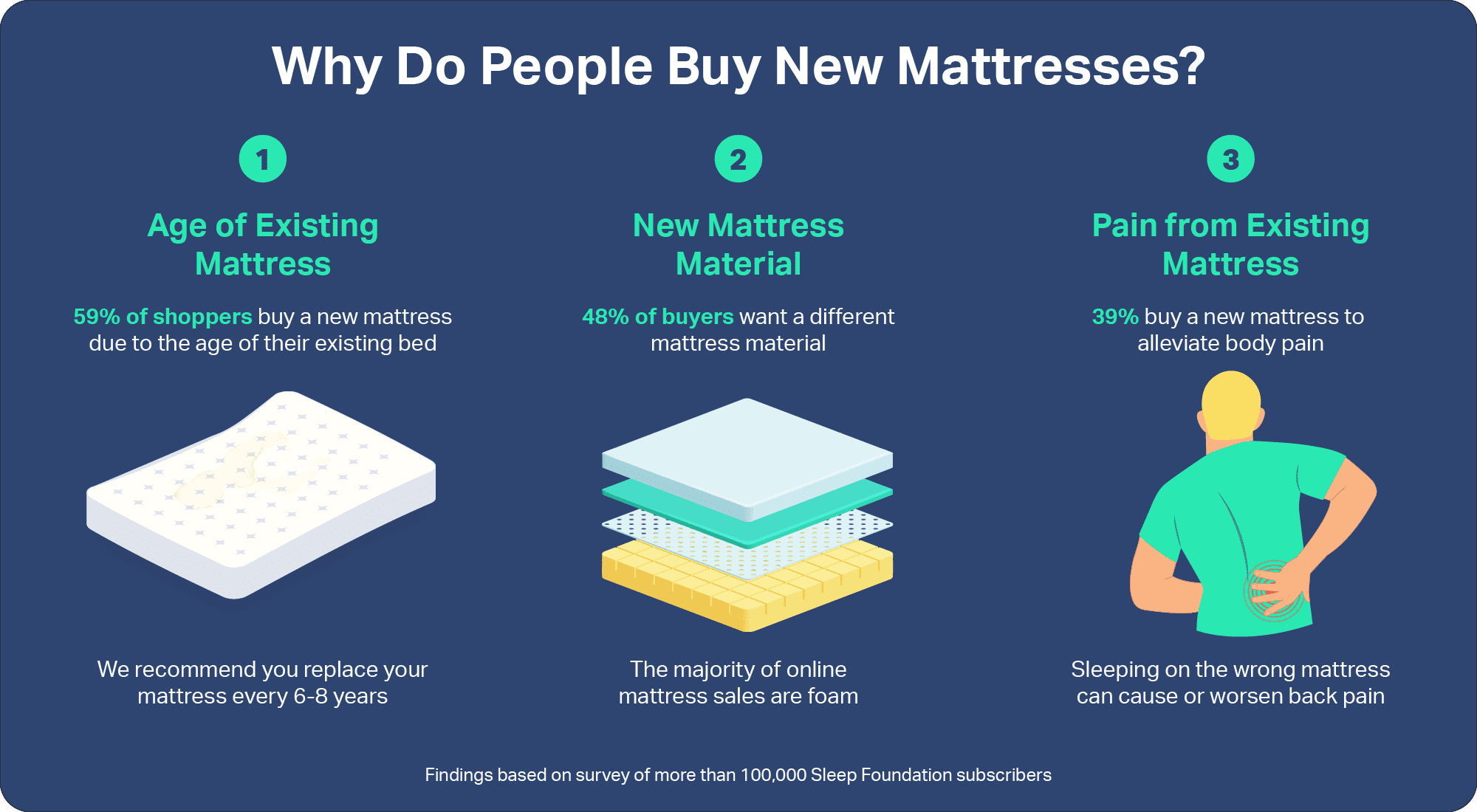
Tips for Sleeping Comfortably With Arthritis and Joint Pain
Sleeping more comfortably through the night is possible, even if you have arthritis and joint pain. There are several easy and inexpensive ways to make your bed more comfortable and supportive.
“Sleep and pain have a bidirectional relationship, and the current data suggest that the effects of sleep on pain are likely stronger than the effects of pain on sleep. Focusing on improving your sleep quality may help with your overall pain level. Common changes to sleep quality could include difficulty falling and/or staying asleep, more sleep fragmentation (i.e., more awakenings during the night), early morning awakenings, and unrefreshing/non-restorative sleep.”
– Sarah Silverman, Psy.D., a licensed psychologist and holistic sleep wellness consultant who treats patients in New York and Florida.
Talk to Your Doctor
Your doctor should be the first stop on the road to relief from arthritis symptoms. While our team of experts has thoroughly tested each mattress, our advice is not a substitute for medical treatment. Your healthcare team knows your specific needs and can create a plan that helps alleviate sleep-related pain.
Invest in a Mattress Topper or Pad
Using a mattress pad or topper is an easy and inexpensive way to extend your current mattress’ lifespan or change its feel. Pads are thinner than toppers and are often used for mattress protection and subtle changes. Toppers tend to be 2 to 4 inches thick and can give more support and alter a mattress’ firmness level.
You can find toppers designed to increase support or enhance pressure relief, two important factors for people with arthritis. If you want pain relief but like your mattress’ overall feel, consider a heated mattress pad that can help loosen joint tension.
Use Extra Pillows for Support
Before purchasing an entirely new mattress, try strategically using pillows for extra support. If you’re a side sleeper with knee pain, a pillow between your knees can align the spine and ease pressure while extending additional support to your hips. One pillow under the knees can be similarly beneficial for your lower back if you’re a back sleeper.
Body pillows can also take stress off your hips, shoulders, and knees, especially if you’re a side sleeper and you use it lengthwise from head to toe. Neck, or cervical, pillows can bridge the gap between your shoulders and head and ensure that your neck doesn’t curve where your head meets the pillow.
How We Test: Your Comfort Is Our Science
Our industry-leading product testing team cares deeply about improving your sleep. Having a holistic understanding of a mattress’s role as part of a sleep system is paramount to our testing process. Since a bed’s comfort and feel depend largely on body weight and sleeping position, our testing team represents a wide range of body types, sleep positions, and comfort preferences.
In our Seattle-based Test Lab, we use an objective, hands-on process to evaluate mattresses across performance categories. The following are the key guidelines that inform our performance ratings. Our ultimate goal is to ensure you have all the information you need to make the best purchase decision for you.
Construction analysis: We begin testing each mattress by analyzing its design and making note firmness, height, individual layer composition, and sticker price. This allows us to evaluate qualities like support, durability, and value.
Product testing: Firsthand testing is crucial to our evaluation and ratings system. We use a wide range of tools and technology to test mattresses in six performance categories: motion isolation, pressure relief, temperature control, ease of movement, edge support, and odor potential.
Field testing: In addition to lab-based tests, we base our ratings on feedback from field testers who use the mattresses in their own homes. They spend several weeks collecting data — this gives us insights into how the mattress performs night after night for an extended period.
User testing: We curate feedback verified owners have provided in surveys, sleep stories, and product reviews. This helps us evaluate our initial findings and, if needed, tweak our ratings to reflect real-world experiences.
How We Determine Our Overall Scores


To determine a mattress’s overall score, we assign weighted percentages to performance categories based on how important they are to the individual sleep experience. For instance, areas like pressure relief and temperature control tend to matter more to people than something like off-gassing, and because more people sleep on their side and back than on their stomach, we weigh those positions more heavily.
Performance Categories
Motion Isolation
This criteria alludes to the amount of motion a mattress absorbs when a sleeper moves on the surface. We use two testers lying side by side to evaluate motion isolation, who each feel for transfer while the other person moves on the mattress.
Temperature Control
To determine how well a mattress regulates temperature, we perform temperature tests and look closely at its materials and construction. Many mattresses are designed with cooling components meant to reduce heat retention.
Pressure Relief
A bed with strong pressure relief excels at preventing pressure from building up in areas like the shoulders and hips. Beds with even contouring and weight distribution are top performers when it comes to pressure relief.
Off-Gassing
A mattress in a box may release unpleasant chemical odors for a short period after you’ve unboxed it. The initial smell may be strong but typically fades within 2 or 3 days.
Ease of Movement
This criteria reflects how easily a sleeper can move across a bed’s surface. Responsive surfaces made of latex typically perform better than foam surfaces, which can inhibit movement.
Edge Support
We perform sit tests along a bed’s perimeter to measure how well the edges push back against weight. Mattresses with strong edge support have minimal sagging when sleepers sit on or lie close to the perimeter.
Dive Deeper – Mattress Guides by Purpose
If you need further help choosing a mattress that checks all of your boxes, you can read through our detailed guides broken down by mattresses for your particular requirements.
Best Mattress by Specific Purpose
Mattresses for Arthritis FAQ
Can a mattress make arthritis worse?
While a mattress may not affect your arthritis’ overall severity, an unsupportive bed can worsen symptoms and make you uncomfortable.For example, a mattress that allows your spine to become misaligned can put stress on your joints. Choose a mattress that has the right firmness level for your body weight and sleeping position to avoid this issue.
What is the best mattress type for arthritis?
The best type of mattress for arthritis is a model that promotes an aligned spine while cushioning the joints. Mattresses that are easy to move around on can also be beneficial because you don’t have to use extra effort to shift sleeping positions or get in and out of bed. The right hybrid, innerspring, foam, and latex mattresses for your body type and sleep position preference can all offer these benefits.
Is a firm mattress good for arthritis?
A firm mattress may be good for arthritis as long as it’s the right firmness level for your body weight and it has adequate cushioning for your joints. Although research shows a medium-firm mattress best alleviates back pain there is no one-size-fits-all perfect mattress firmness. Sleeping position can also play a role where generally back sleepers tend to feel more comfortable on a firmer mattress compared to side sleepers. You should purchase one that’s right for your weight and sleeping position. If you’re a side sleeper or weigh less than 130 pounds, a firm mattress may cause discomfort.
What is the best sleeping position for arthritis?
The best sleeping positions for arthritis are typically back or side sleeping because they minimize joint stress while keeping your spine in a healthy posture. Stomach sleeping can increase discomfort because it’s tricky to support your back and neck properly while you’re in this position. Back and side sleeping can also cause discomfort in the lower back, hips, or knees, but it’s typically easier to maintain an even spine while sleeping in these positions.

Still have questions?
Our product experts have extensive experience testing just about every sleep product on the market.
Send an email to AskAnExpert@sleepfoundation.org with your questions and we’ll help you find exactly what you’re looking for.

